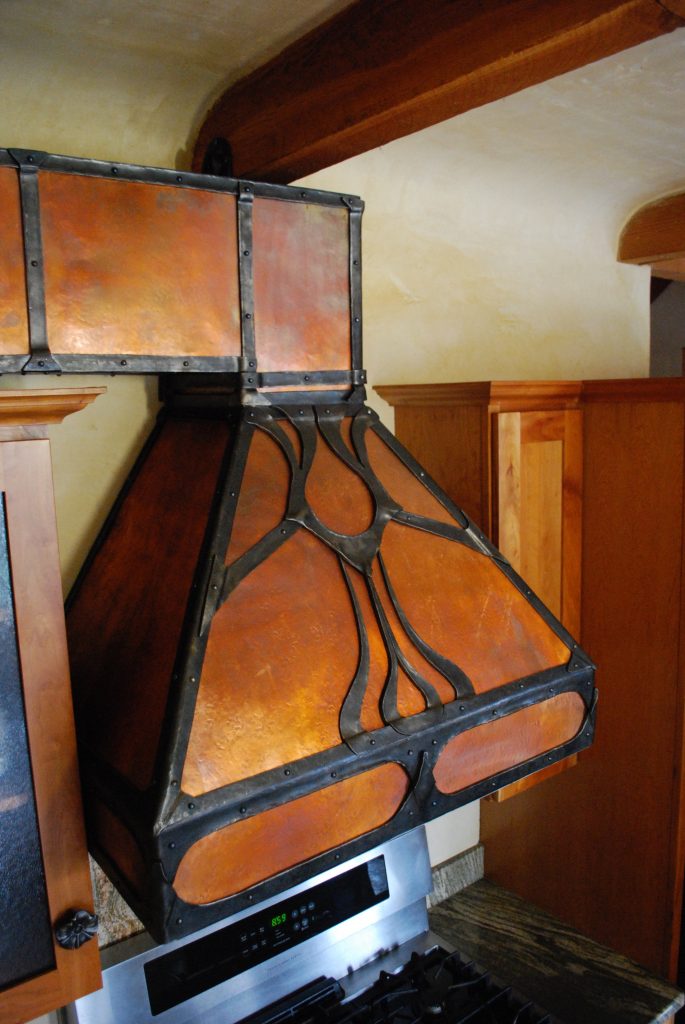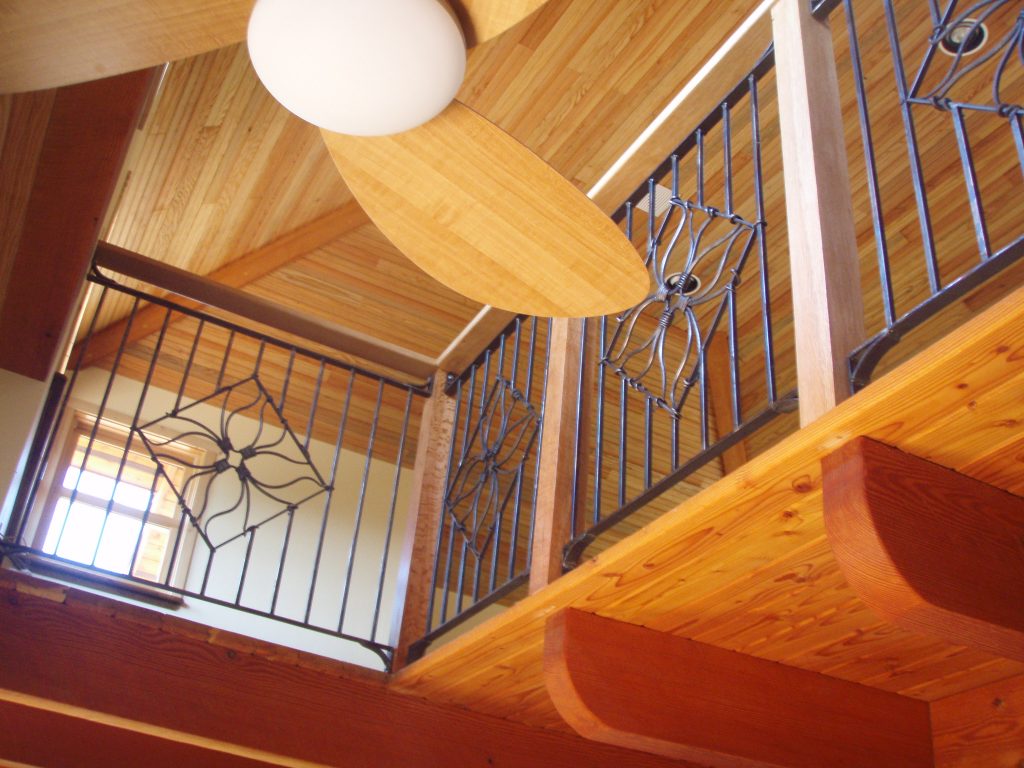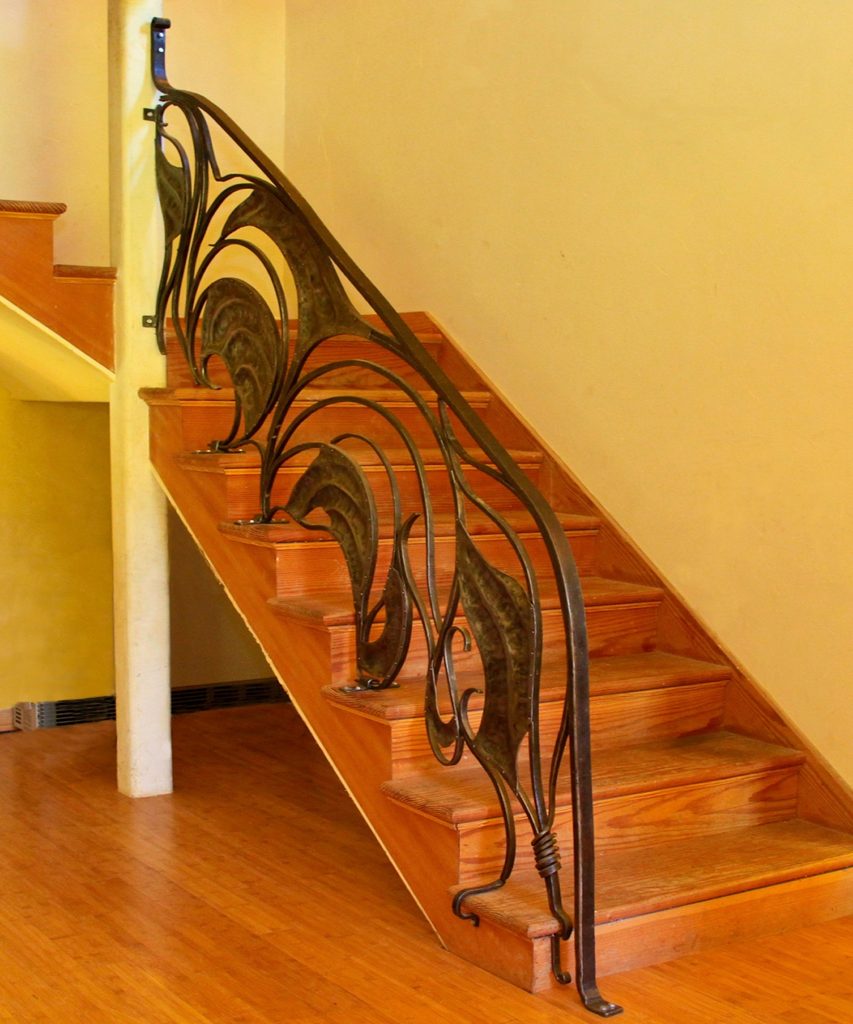“If I’m given a task in my shop, I solve it … If I need a tool, I make it.”
Modern industry may have removed the necessity of the blacksmith, but for Monica Coyne, the craft is as much alive and breathing as the fire fueled by the bellows.
This California artisan’s thick apron — its light-brown leather stained black with coal dust, rust, and the oil that comes off of new steel — is decorated with lines and shapes that were burned into the leather as she used the apron to shield herself from hot metal, scale, and flying wire-brush fragments. For Coyne, there is incredible beauty in the brutality of this pursuit.
Just as they did in the first century, blacksmiths in the 21st century move metal. At 2000°F, steel and iron become like clay. They go from rigid and lifeless to supple and malleable. But metal is never truly relaxed. The speeding atoms are trying to melt the very bonds that make the material what it is. When Coyne is blacksmithing, she is playing with the tension of this contradiction.
Like all blacksmiths throughout history, Coyne is resourceful and interested in finding her own solutions: “If I’m given a task in my shop, I solve it. If I need a tool, I make it.” Her work ranges from contemporary art to functional elements for the home, such as railings, fireplace doors, racks and hooks, curtain rods and towel bars, chandeliers and range hoods, and even decorative timber brackets.

Coyne believes that blacksmithing is the timber-framing of metalwork. “The raw materials convey the human energy used to make a functional piece,” she says. It’s that very energy that attracts her clientele. “My process is evident in my finished work. I work for clients who want that look,” she explains.
Although trained as a fabricator, these days Coyne considers herself a blacksmith in the purest sense of the word. So while she follows the techniques and skills of blacksmithing — forging, forge welding, and joinery — her work focuses on shaping the metal in order to make creative connections that interest her. However, her design process is collaborative. “I encourage my clients to give input into the design. I want to know what their interests and tastes are because I want to make pieces that fit well into their lives.”

For Coyne, the process of blacksmithing is driven by two things: thinking and efficiency. She likes to lay out a project to scale, and from all angles, before forging anything. “I often do experiments with joinery in modeling clay, using my hammer and tools in the clay just as I would with the steel.” Within this process, she is always mindful of the flow and balance achieved in the design phase.
Like many who are devoted to their craft, Coyne finds deep joy and solace in her work. “When I am struggling with a profound question, or frustrated and saddened by the news of the day, I can always feel better by making things. In this harsh environment, when the metal is yellow hot, I get the feeling that if I hit it hard enough and pay close enough attention, I can find the answers.”

Monica Coyne specializes in custom metalwork crafted in her off-the-grid Northern California smithy. Keep Craft Alive is our campaign celebrating those who have chosen to passionately pursue a career in design, building, and remodeling. Find out more and show your support by visiting KeepCraftAlive.org, and use #KeepCraftAlive to share your passion for the cause.
This post originally appeared on Finehomebuilding.com.





